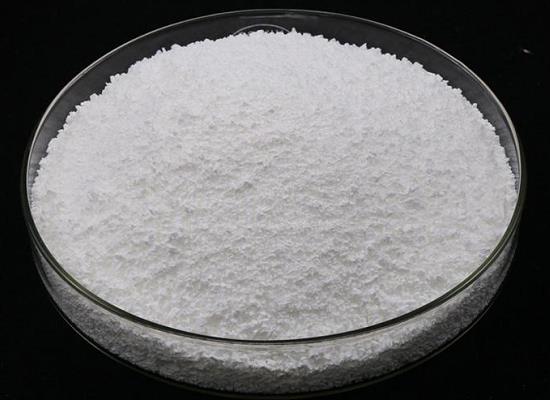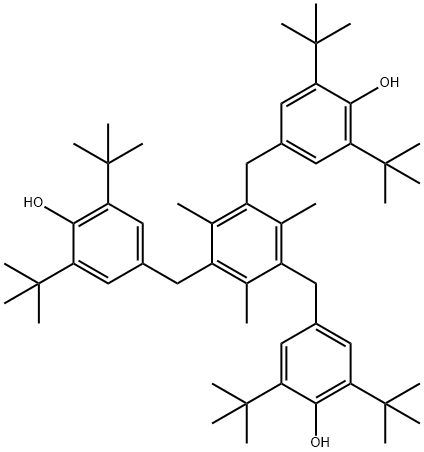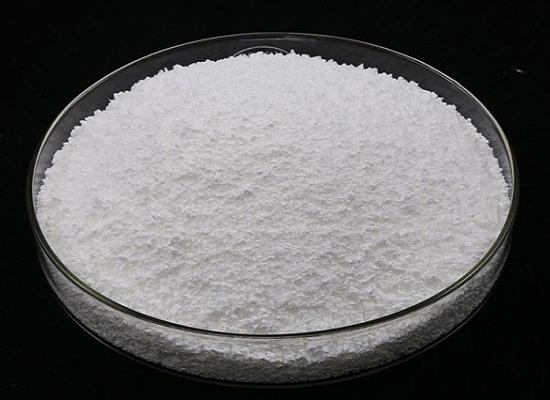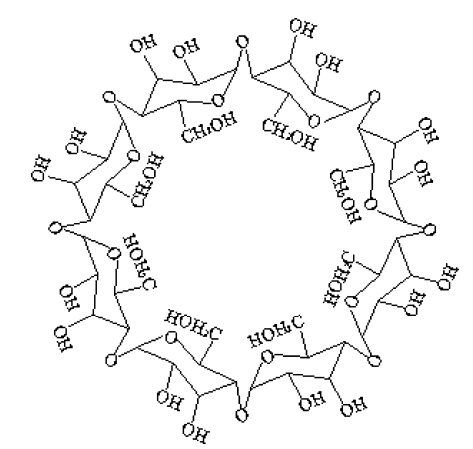Antioxidant 1330: Overview, Production and Application as Catalyst
General Description
Antioxidant 1330 is a versatile phenolic primary antioxidant widely utilized for thermal stabilization in various organic substrates. Its sterically hindered phenolic nature provides exceptional protection against thermo-oxidative degradation in polymers, synthetic fibers, elastomers, adhesives, and waxes. Specifically recommended for polyolefins and engineering plastics, it ensures longevity and performance in industrial applications. The production of Antioxidant 1330 involves a meticulous process utilizing specific catalysts and solvents to achieve high yields efficiently. Furthermore, Antioxidant 1330’s recent discovery as an effective catalyst in the synthesis of silyl ketene acetals highlights its potential for enhancing reaction efficiency and product yield in chemical processes, showcasing Antioxidant 1330’s significance across industries.

Figure 1. Antioxidant 1330
Overview
Antioxidant 1330 is a phenolic primary antioxidant widely used for processing and long-term thermal stabilization of various organic substrates. As a sterically hindered phenolic antioxidant, AO-1330 is highly effective in protecting polymers, synthetic fibers, elastomers, adhesives, and waxes from thermo-oxidative degradation. Antioxidant 1330 offers exceptional stability and compatibility with a wide range of substrates, making it a versatile choice for industrial applications. It exhibits high resistance to extraction, is odorless, and provides excellent dielectrical properties, making it a preferred option for many manufacturing processes. Specifically recommended for polyolefin applications, including polyethylene, polypropylene, and polybutene, Antioxidant 1330 is commonly used for stabilizing pipes, molded articles, wires, cables, and dielectric films. Additionally, it finds applications in engineering plastics such as linear polyesters, polyamides, and styrene homo- and copolymers. It can also be utilized in PVC, polyurethanes, elastomers, adhesives, and other organic substrates. Overall, Antioxidant 1330 is a reliable and effective solution for enhancing the longevity and performance of various materials in demanding industrial environments. Its unique properties make it an essential component in the production and maintenance of a wide range of products across multiple industries. 1
Production
The production of Antioxidant 1330 involves a specific method that utilizes various reagents, catalysts, and solvents to achieve a high yield of the desired product. The method is designed for industrial large-scale production and offers promising market prospects. The production process begins with the reaction between 1,3,5-trimethylbenzene and 1,3,5-tris(chloromethyl)-2,4,6-trimethylbenzene in the presence of a ternary composite catalyst and a dilute hydrochloric acid water solution. The concentration and amount of hydrochloric acid are carefully controlled to ensure optimal conditions for the reaction. The catalyst system employed consists of 3,4,7,8-Tetramethyl-1,10-phenanthroline, Cadmium iodide, and Ytterbium triflate. These catalysts work synergistically to facilitate the reaction and enhance the yield of Antioxidant 1330. The solvent system used in the production process is water. The reaction takes place at room temperature initially and then heated to 50 °C for a duration of 10 hours. This carefully controlled temperature and time profile ensures the efficient conversion of reactants into the desired product. By selecting and combining the appropriate catalyst system and solvent system, the production method achieves a high yield of Antioxidant 1330. Its suitability for industrial large-scale production makes it a valuable technique with broad market prospects. In conclusion, the production of Antioxidant 1330 involves a well-designed method that utilizes specific reagents, catalysts, and solvents to obtain a high yield of the target product. This production process holds significant potential for meeting the demand in various industries. 2
Application as Catalyst
Antioxidant 1330 is an antioxidant that is commonly used as a catalyst in the chemical industry. In recent years, it has been found to have excellent catalytic properties in the synthesis of silyl ketene acetals and disilyl ketene acetals from a, ß-unsaturated carboxylic esters and hydrosilanes or hydrosiloxanes in the presence of tris (pentafluorophenyl)borane catalyst. The composite catalyst comprising main catalyst and antioxidant, has shown to have high catalytic activity and product yield. Antioxidant 1330 has also been used as a catalyst in the preparation of hydroquinone di-Me from hydroquinone and di-Me carbonate. The combination of Antioxidant 1330, Cupric nitrate, and Sodium bromide has been found to be effective under certain conditions, such as at 6 hours, 5 MPa, and 210 °C. 3
Reference
1. Antioxidants: AO-1330. MPI chemie. CAS: 1709-70-2.
2. Li C, Wang J, Shi W, Li J, Zhang Z. Preparation of hindered phenolic antioxidant 330. 2015. Patent Number: CN104788292.
3. Xue Q, Qi WB, Yan L. Composite catalyst and its preparation method and application in synthesis of hydroquinone dimethyl from hydroquinone and dimethyl carbonate. 2021. Patent Number: CN113117723.
Related articles And Qustion
See also
Lastest Price from Antioxidant 1330 manufacturers

US $8.80-2.20/kg2025-06-28
- CAS:
- 1709-70-2
- Min. Order:
- 1kg
- Purity:
- 99%
- Supply Ability:
- 100kg

US $0.00-0.00/kg2025-04-21
- CAS:
- 1709-70-2
- Min. Order:
- 1kg
- Purity:
- 99%
- Supply Ability:
- 20MT



